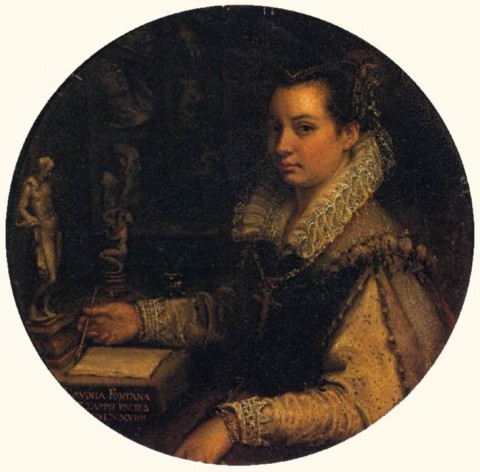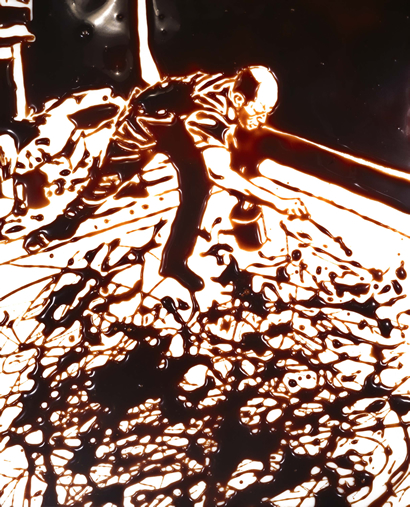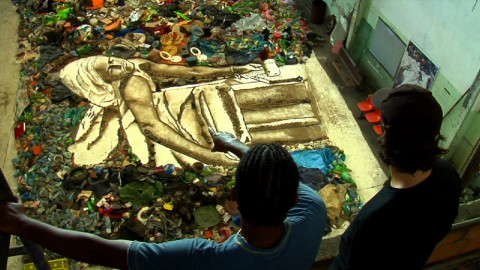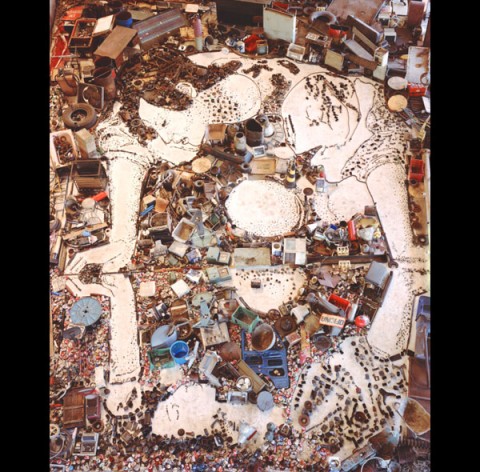Wednesday, July 31st, 2013
Lavinia Fontana’s Self-Portrait and Gender
Lavinia Fontana’s self-portrait from 1579 has long been of interest to me. I wrote about this painting on a guest post at Three Pipe Problem a few years ago, and I regularly use this self-portrait when I discuss Renaissance art with my students. Today I read some new considerations about this portrait in relation to gender and objectification, which I thought that I would jot down. These ideas were discussed by Catherine King in “Portrait of the Artist as a Woman” in Gender and Art (edited by Gill Perry).
I think King has some great ideas, and I think that a few of them can be taken even further. For example, King mentions that the circular form (tondo) form for the painting is significant, since “the circle was regarded as the most perfect geometric structure in contemporary scientific and philosophical thought, as it described the path of the planets and the structure of the cosmos.”1 I also wonder if Fontana chose this particular form because the circle is associated with the female sex, as was the case in ancient cultures like those of Egypt and Rome. The circle, for example, recalls the shape of the maternal womb and also the ovum. We know that Fontana’s self-portrait was intended to be placed in an engraved collection of other portraits, and it would be interesting to know if any of them appear in tondo form. (Does anyone know? I do know that the engraved collection was never published, but I’m not familiar with other original extant paintings that were intended to be turned into engravings for the collection, beyond this self-portrait).

19th century engraving of Lavinia Fontana's Self-Portrait, Castello Sforzesca, Raccolta Bertarelli, Milan
Catherine King also mentioned a few other significant details which I have not considered before. A nineteenth century engraving of this portrait allows us to clearly see that a nude male anatomical model is placed in the foreground, while a female nude is placed in the middle ground. On one hand, Fontana includes these figures to show off her education; she is a learned artist who has studied the human form and anatomy. However, Fontana may have also composed these figurines in a way to control her own image in relation to social decorum. King points out that the male figurine is turned with his head downward, so “there is no risk of the viewer imagining the naked man looking at [Fontana] while she is looking at us. It is, rather, she who is in charge of the gaze.”2
I think we could also take King’s ideas further and say that Fontana seems to want to control the (male) gaze and objectification of the female form in other ways, too. One can see that the little female anatomical model is twisted in a way so that her left thigh blocks the viewer from seeing her genitals. Her arm also reaches upward, partially covering her breast from view.3 Just as Fontana has worn high-collared and modest clothing in this self-portrait, she also seems to eschew objectification of the female nude, through the figure’s placement further away from the viewer and composition of the figure’s limbs. King hints at something along these lines, too: she notes that the female figure is placed further in the background in order to discourage the viewer from “mentally undressing” Fontana herself.4
King also finds that Fontana asserts her control over her image and female representation by drawing a contrast with the anatomical casts that are in the background. These casts, which are arranged in a cabinet, are also gendered. For example, three male heads are included in the shelves closest to the viewer. The heads and other (possibly male) body parts are therefore objectified through their fragmentation. Therefore, it seems like Fontana is stressing the male objectification in order to emphasize her subjecthood as the female portrait sitter. And although King never states this opinion outright, one gets the sense that King finds the fragmented bodies to be a bit threatening to the (male) viewer. (It’s not difficult for me to see how a modern viewer/reader could make some loose associations with Freud and castration theories!)
All this being said, I’m interested to know what you think of Fontana’s portrait. Does she seem intimidating and/or controlling to you? Do you feel like Fontana is trying to showcase her beauty and physical appearance? Can you think of any other ways that this painting can be interpreted in terms of gender?
1 Catherine King, “Portrait of the Artist as a Woman” in Gender and Art by Gill Perry, ed. (New Haven, Yale University Press, 1999), p. 53.
2 Ibid., 53.
3 The composition of the female figurine reminds me a little bit Artemisia Gentileschi’s “Susanna and the Elders” (1610). In the past several decades, the composition of the figure of Susanna has been interpreted as one who resists sexual objectification (partially due to art historians who were compelled to discuss this painting in relation to Gentileschi’s personal life).
4 King, 53.




